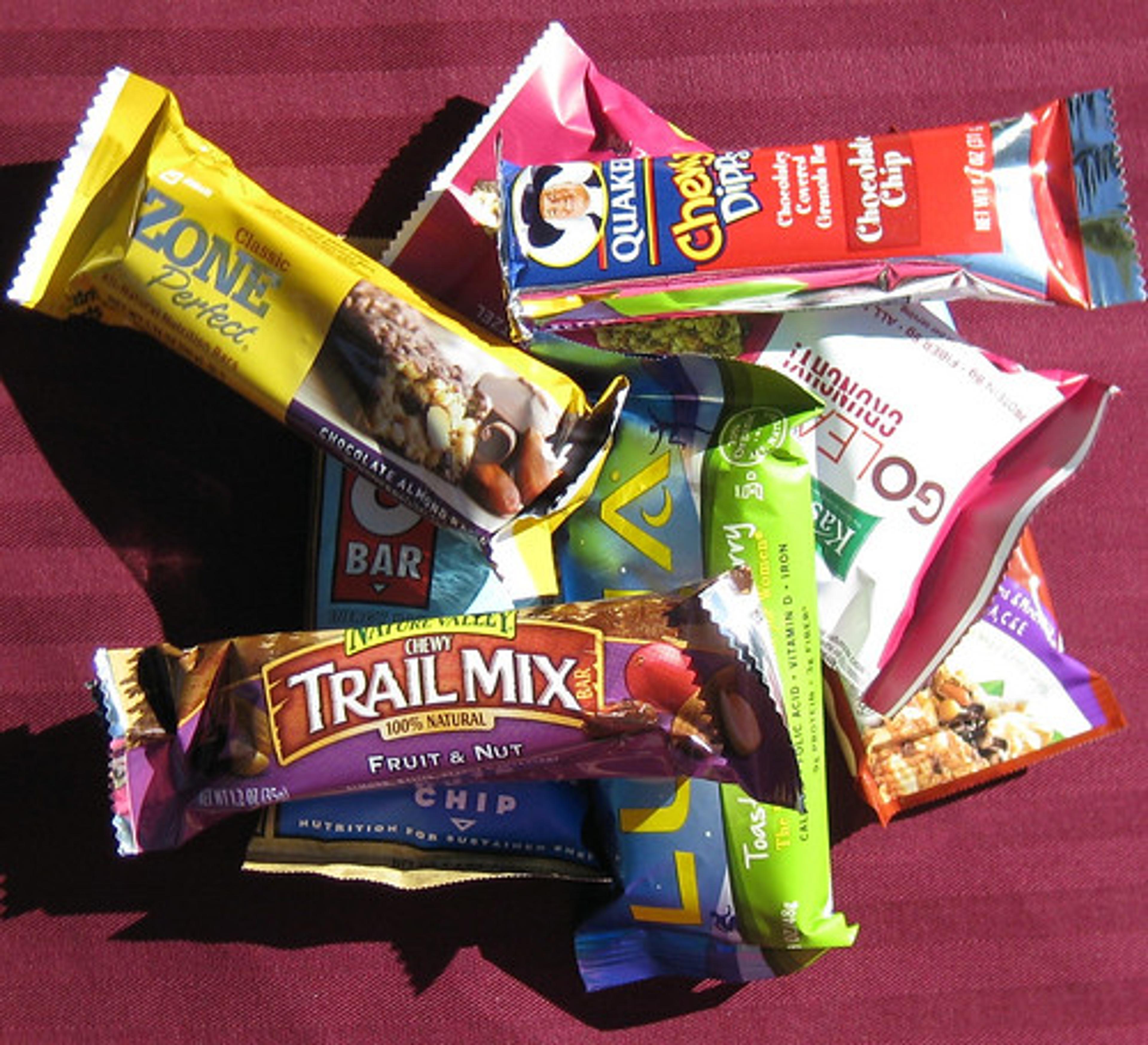The sneaky truth behind nutrition bars

Kristin Coppens
| 3 min read

Nutrition, meal replacement and energy bars are one of the fastest growing categories in the nutrition industry. With our society’s emphasis on convenience and on-the-go, it’s easy to understand why these bars have caught on. However, what claims to aid weight loss, increase energy, and replace meals can actually be an extreme detriment to your diet.
The unhealthy surprise inside nutrition bars contains fat, calories and a surprisingly high amount of sugar. It can be said that nutrition bars are basically just candy bars with a little bit of added protein. Additionally, the FDA currently has no formal guidelines in place for nutrition bars.
Let’s break down the main nutritional misconceptions behind nutrition bars, including sugar, protein, fats, and nutrition label ingredients.
Sugar
Most nutrition bars have just as much sugar as eating a cookie. In fact, high fructose corn syrup is a main ingredient in most cases. Despite claiming to have reduced sugar or to be sugar-free, most bars are loaded with artificial sweeteners and sugar substitutes. To make sure that the bars have more flavor, manufacturers added corn syrup, sugar, sugar alcohols, artificial sweeteners and flavors, and colors, all of which are terrible for your diet and health.
Fats
Nutrition bars can have the opposite desire in aiding diet and weight loss because the types of fats found in most of the bars are trans fats and saturated fats. Also, as another move to add more “flavor” to the bars, manufacturers use hydrogenated oils. In short, the calories present in nutrition bars can sometimes climb well above the number of calories we would eat in a well-balanced meal, while providing little to none of the nutritious benefits.
Protein
Though nutrition bars boast to contain high concentrations of protein, most of the bars consist incomplete protein sources that are typically ruled out by the other nutritional deficits. Protein found in nutritional bars is usually gelatin, hydrolyzed gelatin, or hydrolyzed collagen. These forms of protein lack essential amino acids required to consider them complete and quality proteins.
Nutrition Label Ingredients
The nutrition label on most bars is highly deceiving. Law requires manufacturers to list the ingredients on a label in order of quantity. Because nutrition bars have a high number of types of sugars found in them, you will more than likely see that sugars are listed farther down on the ingredient label. This allows manufacturers to list oats and the like higher up on the list, giving the illusion that those ingredients are far more present and therefore a healthier bar. As a rule of thumb, the longer the list and the more unpronounceable the words, the farther it is from real food.
Regardless of the unhealthy truth behind most nutrition bars, the concept of on-the-go convenience can still be ideal in situations where you might be traveling or active. To receive the most health conscious nutrition bar, the key is to limit the number of ingredients present on the label to a suggested five or less. Men’s Health suggests Larabar Cherry as a good option as the bar has just three ingredients: dates, almonds, and cherries with 190 calories, 8 grams of fat (only 0.5 grams of which is saturated fat), 4 grams of protein, 4 grams of fiber, and 21 grams of sugar.
What are your favorite nutrition bars that are actually healthy?
Photo credit: Greatist





